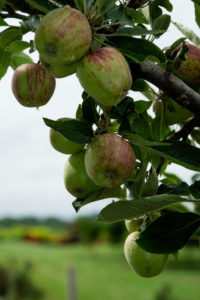WNC Orchard Insect Pest Populations – June 30, 2020
go.ncsu.edu/readext?706261
en Español / em Português
El inglés es el idioma de control de esta página. En la medida en que haya algún conflicto entre la traducción al inglés y la traducción, el inglés prevalece.
Al hacer clic en el enlace de traducción se activa un servicio de traducción gratuito para convertir la página al español. Al igual que con cualquier traducción por Internet, la conversión no es sensible al contexto y puede que no traduzca el texto en su significado original. NC State Extension no garantiza la exactitud del texto traducido. Por favor, tenga en cuenta que algunas aplicaciones y/o servicios pueden no funcionar como se espera cuando se traducen.
Português
Inglês é o idioma de controle desta página. Na medida que haja algum conflito entre o texto original em Inglês e a tradução, o Inglês prevalece.
Ao clicar no link de tradução, um serviço gratuito de tradução será ativado para converter a página para o Português. Como em qualquer tradução pela internet, a conversão não é sensivel ao contexto e pode não ocorrer a tradução para o significado orginal. O serviço de Extensão da Carolina do Norte (NC State Extension) não garante a exatidão do texto traduzido. Por favor, observe que algumas funções ou serviços podem não funcionar como esperado após a tradução.
English
English is the controlling language of this page. To the extent there is any conflict between the English text and the translation, English controls.
Clicking on the translation link activates a free translation service to convert the page to Spanish. As with any Internet translation, the conversion is not context-sensitive and may not translate the text to its original meaning. NC State Extension does not guarantee the accuracy of the translated text. Please note that some applications and/or services may not function as expected when translated.
Collapse ▲ Throughout most of the higher elevation orchards (≥2000 ft), we are still in that period of the low potential for insect damage. Codling moth degree-day accumulations are only at about 940 as of June 30, indicating first generation flight is the complete and second-generation flight is still a few weeks off. Also, OFM populations remain low in most orchards. The most common insects are secondary pests such as aphids, leafhoppers, and mites, all of which can be managed with curative insecticide/miticide applications. Monitoring for these pests over the next few weeks should be conducted to determine the need for insecticides.
Throughout most of the higher elevation orchards (≥2000 ft), we are still in that period of the low potential for insect damage. Codling moth degree-day accumulations are only at about 940 as of June 30, indicating first generation flight is the complete and second-generation flight is still a few weeks off. Also, OFM populations remain low in most orchards. The most common insects are secondary pests such as aphids, leafhoppers, and mites, all of which can be managed with curative insecticide/miticide applications. Monitoring for these pests over the next few weeks should be conducted to determine the need for insecticides.
In lower elevation orchards, such as Lincoln and Cleveland Counties and other locations ≤1000 ft, second-generation codling moth flight is just beginning. Cumulative codling moth DDs in this area is about 1400 DD, and insecticides are recommended at about 1450 DD when populations are of moderate to high density. Where populations are low – no damage by the first generation and low pheromone trap capture (no more than 1 or 2 moths per week) – insecticide applications can be delayed to 1550-1600 DD, or not applied if trap captures remain very low.
In orchards using mating disruption for codling moth and OFM, insecticides targeting second-generation are rarely needed, although pheromone trap monitoring should be used to verify the absence of moths.
Learn more about southeastern apple insect pests at the Apple Insect Management page.
2020 Average Weekly Trap Captures
| HENDERSON COUNTY | |||
| Insects per trap | |||
| Jun 15 | Jun 22 | Jun 29 | |
| Codling moth | 0.3 | 0.0 | 0.7 |
| Oriental fruit moth | 2.6 | 1.6 | 1.0 |
| Tufted apple bud moth | 23.0 | 2.0 | 4.0 |
| Redbanded leafroller | 0.0 | 0.0 | 0.0 |
| Obliquebanded leafroller | 14.0 | 2.0 | 0.0 |
| Lesser appleworm | 0.0 | 0.0 | 0.0 |
| Apple maggot (abandoned and research orchards) | 0.0 | 0.0 | 0.7 |
| Brown marmorated stink bug (commercial) | 1.1 | 0.8 | 1.5 |
| Brown marmorated stink bug (unsprayed) | 4.3 | 1.5 | 1.9 |
| Spotted tentiform leafminer | 0.0 | 24.0 | 31.0 |
| Dogwood borer | 36.0 | 9.0 | 14.0 |
| Peachtree borer | 3.0 | 5.0 | 9.0 |
| Lesser peachtree borer | 54.0 | 41.0 | 33.0 |
| San Jose scale | 0.0 | 2.5 | 190.0 |
*Note that these averages illustrate only the timing of insect emergence and fluctuations in populations, and are not representative of population levels in any given orchard. The only way to have an accurate assessment of an individual orchard’s populations is to set up traps in that orchard.
2020 Accumulated Degree Days
| HENDERSON COUNTY | ||||
| Jun 15 | Jun 22 | Jun 29 | ||
| Codling moth (Biofix 4/20) | 678 DD | 778 DD | 919 DD | |
| Oriental fruit moth (Biofix 3/30) | 1111 DD | 1246 DD | 1421 DD | |
| Tufted apple bud moth (Biofix 4/27) | 853 DD | 988 DD | 1163 DD | |
2020 Pest Trends
Visit WNC Orchard Insect Populations for archived posts.


